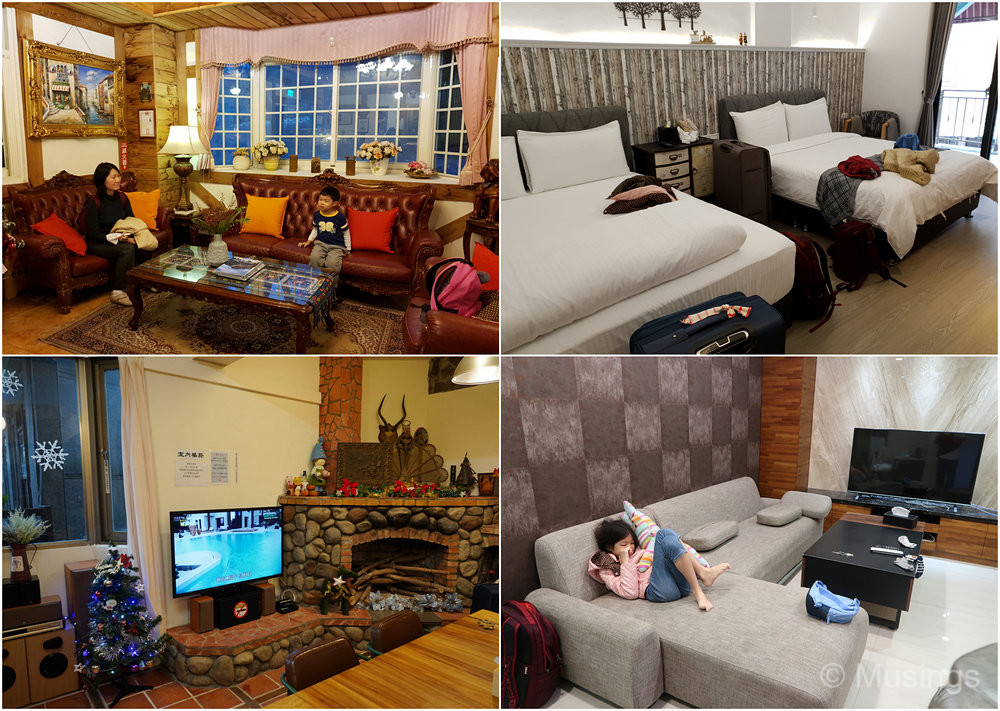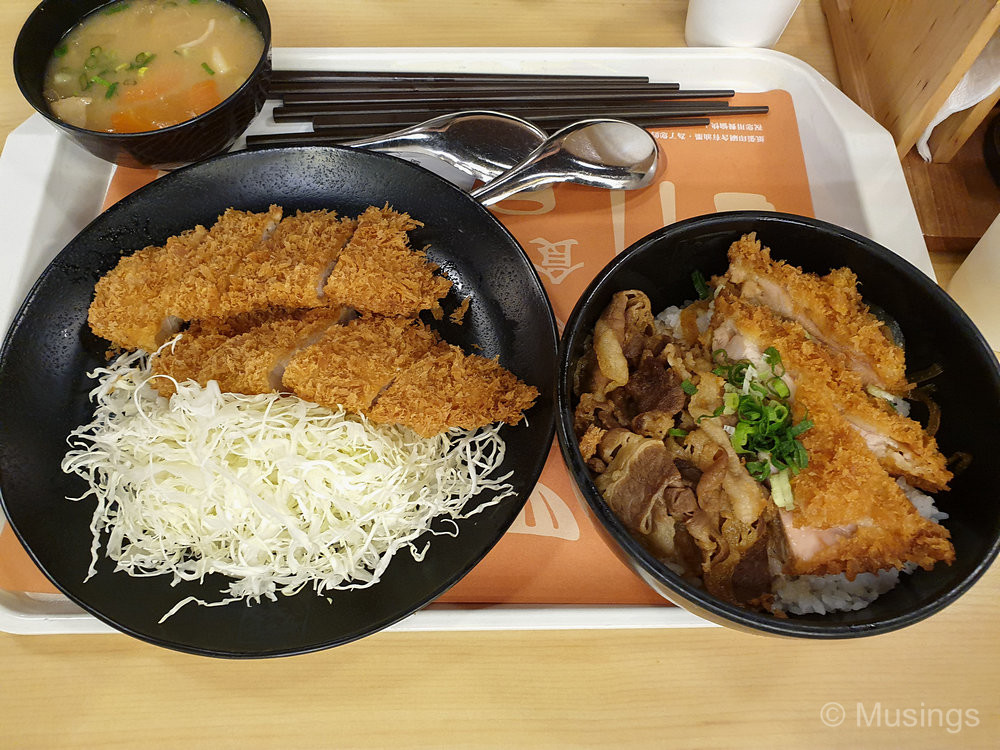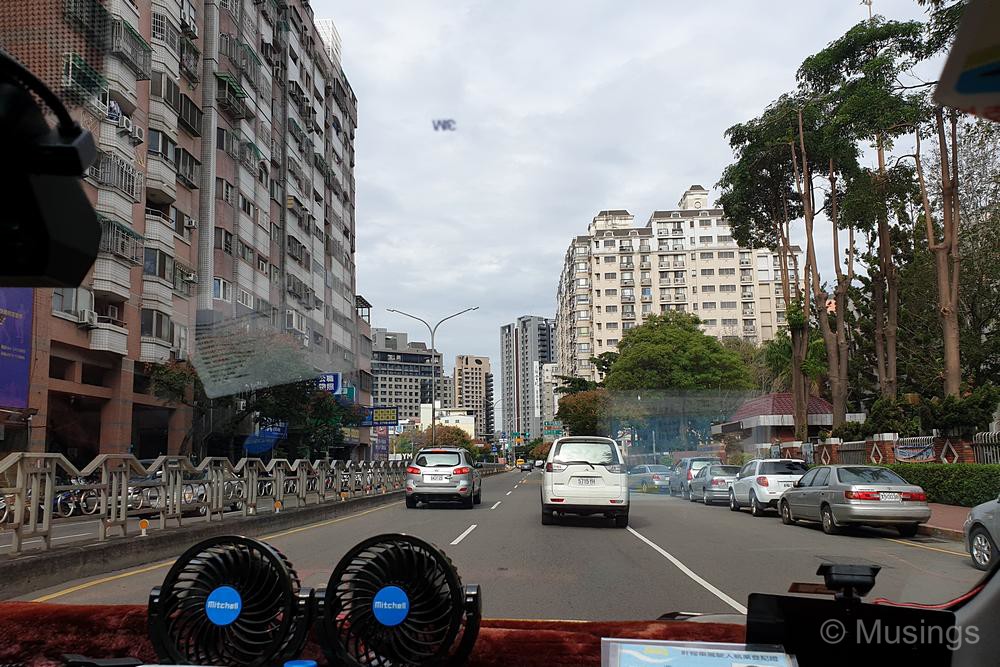This is a two part post reflecting on our 12 day trip to Taiwan, with the first part here.
Accommodations
We stayed in five different properties this trip: four of which we booked via Airbnb, and the fifth – The Cotswold Villa – via Booking.com. There’s also apparently some kind of government scrutiny of Airbnb properties in Taiwan, and one of the four Airbnb homeowners even asked us to keep a low profile if possible. Which we did – especially since Peter can be pretty noisy when he’s in a good mood! On the other hand, we had zero anxieties in our Hualien and also Jiufen homes, since we were just renting rooms (as opposed to an entire apartment) and the homeowners themselves were staying with us, and they would be on hand to sort any difficulties out. Unlike the ongoing Airbnb controveries in Singapore though, there are really very few amenities like swimming pools and gyms to be shared with short-term guests in many of these Taiwanese apartments – it’s residence only – so I reckon neighbors have less reason to complain and let the homeowners rent through Airbnb as they wish, the other issues of building fire safety etc. notwithstanding.
Of the five properties we stayed in, with the exception of our Taichung home which was just functional, all were exemplary in their own way. The Cotswold Villa in Cingjing is styled after an old English home, had a jaw-droppingly gorgeous common room and was run by a very warm proprietor; the Hualien minsu’s room decor was like a 5* hotel; the Jiufen minsu’s ‘room’ was exceptionally large with its own sitting and dining areas, and yet still homely; and the Taipei apartment looked and felt like a typical Singapore condo apartment, and had a bidet-styled toilet too.
One last point to note about WYSIWYG in short term rentals. I’ve already remarked on this in other posts: the properties listed on Airbnb can look really pretty in pictures, but you might be awfully shocked when arriving and taking your first look at the exterior and facade of the apartment block, especially in Taipei and Taichung. But the interiors can still be quite modern, so don’t lose confidence in your bookings!

Eating and Dining
I found that dining pricing varies quite a bit, like everywhere else. We weren’t hanging out at the swanky hotels this trip of course. Actually we’ve never splurged on our family vacations to begin with. We just find the best bargains, and try to save wherever we can! We did see some pricey restaurants in the Xinyi area in Taipei. Interestingly, the street food isn’t as cheap as I thought it would be. It’s affordable yes, but not what I’d call rock-bottom cheap. We had dinner at Dongdamen Night Market, and bought items and drinks from several stalls. The amount of food we had wasn’t excessive, but we still chalked up an expenditure of about NTD660/SGD30.
The street eateries however are a different matter: they are extremely affordable, and we could have a sit-down meal of authentic Taiwanese dishes for under NTD220/SGD10. That’s practically unheard of in Singapore. The Taiwanese also especially love their hot pots, and we had them three times: at Master of Mushroom (NTD969/SGD43 for all of us), Spring Ground Hot Pot City (NTD1760/SGD78), and at a Taiwanese teahouse (should be 九份咖啡茶樓) just beside A-Mei (NTD740/SGD33).
Dining wise, aside from Taiwanese street food and hotpots, the other persistent impression I’ve got is the number of eateries and restaurants offering Japanese cuisine. OK, Japan-lovers and purists will insist that if you really want good Japanese food, you head north by another 2,163 kilometers to get your authentic fix there. But by my limited taste bud standards, the sushi, katsu sets, beef bowls, and Japanese-styled steaks were pretty good.

Infrastructure
I’d expected Internet access to be good in the built-up areas in Taiwan and it was indeed OK but not great. I guess I’ve been totally spoiled by 1Gbps data speeds back at home, and expected similar high data throughput speeds in the highly urbanized cities like Taichung and Taipei. Surprisingly, the fastest upload speeds that I got to upload the 61.7GB of 4K video I’ve taken this trip was in… Hualien. Yep, the laid-back small town. Furthermore, what really surprised me was that even in the hilly and mountainous areas – if up to a point – I still got good mobile network coverage using the Chunghwa 4G data sim card that I picked up at Taoyuan International Airport after doing a reservation first via Klook. The ChangiWifi mobile router network was a bit spotty though. There were places where the Chunghwa 4G network worked fine, but the ChangiWifi router I rented occasionally struggled to find a signal. But the signal was stable once it locked in.
The subway network in Taipei is expansive. And if you’re coming out of Singapore, the network system in the city works pretty much like the subway back at home, and even has a similar name – MRT. Lines are color-coded – though the BRown line color signage could be a darker shade than the Orange line to better differentiate between the two – and there are several interchange stations which will see a lot of commuter traffic. Station names are read out loud in Mandarin as the trains approach each stop. But it’s easy to guess where you’re at even if you can’t speak Mandarin, since their English name equivalents do sound like the Chinese versions. Rides are attractively priced, with distances of 2-3 stops costing as little as NTD20/SGD0.90 each time.
There’s also a stored value card that you can buy, but we took the advice of the station control staff. They explained that since we’re in Taipei for just a few more days, it wouldn’t make sense for us to buy the card on account of the non-refundable card deposit of NTD100. Peter also traveled on public transportation for free, likewise also for admission charges to a few places. I doubt if he’ll enjoy such a benefit again in the next trip!
In comparison to what we see at home too, train passengers readily gave up their seats for Peter and Hannah when we boarded, kept to the appropriate side when on escalators, and formed the queues along marked-out floor lines while waiting for trains, and did not rush for the car entrances when the trains arrived. Singaporean train users could really learn basic manners from the Taiwanese when it comes to use of public transportation!
The HSR – high-speed rail – ride from Taichung to Taipei was comfortable, though the normal trains between Taipei and Hualien were slightly less so. Interestingly, the latter doesn’t seem to run as strictly on their timetables compared to what we’ve seen and read in Japan – where train operators are known to apologize if their train departs earlier by mere seconds. Our TRA train from Taipei to Hualien stopped on the tracks for 15 minutes on the other hand, and no one batted an eye lid!

Lastly, It’s really helpful too that there seems to be just one dominant cab company running the Yellow Cabs, and taxis run by metered fare and the several cabs were took for short trips within cities were large and comfortable.
For Photographers
There is plenty of varied scenery in Taiwan for picture-taking. The interesting photo ops areas include: Gaomei Wetlands, Xitou Nature Education Area, Sun Moon Lake, Mt. Hehuan, Cingjing Farm, Taroko Gorge, Golden Waterfall, Jiufen Old Street, Yangmingshan (if it’s not foggy), and Taipei 101 of course, both from the observation decks or outside. You’ll want a reasonably wide-angle lens for several of these spots, but leave the tripod at home/accommodation. I doubt you’d be able to deploy a tripod for long-exposures because of crowds and congestion – which basically means your handholding technique needs to be rock-solid for the night shoots, and an image or lens stabilization system supported by your camera will be necessary.
Excepting Day 5 afternoon which was terrifically sunny, the weather for our trip alternated between clear but not really sunny to cloudy/overcast and to rainy. So, the circular polarizers I brought along for the trip ended up unused for the most part since there were no blue-skies to work with anyway. I think I’ll really want to ditch filters the next trip, unless it’s to a place like the Maldives. They’re just a hassle to use when I’m already lugging around so much equipment.
Equipment-wise, I observed that most visitors used their smartphones for picture taking. No longer unusual these days of course. What I found intriguing was the number of m4/3 users for those who were toting ILCs – I saw almost as many owners of this system, especially using Panasonic bodies, as visitors carrying Canon EOS bodies with standard 18-55mm zoom lenses. Beyond that, I recall only seeing one other visitor using full-frame and a Sony A7 too to boot (hooray!).
—
That’s nearly a wrap for all my posts on our Taiwan trip. There are 45 posts so far, with two more left to go. Still far less than the whopping 82 I wrote for our Japan 2010 trip or the 64 for my 2010 work trip to New England, but slightly more than the recent Western Australia 2017 trip where I wrote 42 posts. It’s not a competition of course with the travel influencers – we’re not exactly in the same space since our blog here is non-affiliated and we do not accept sponsored products or services to talk about. I blog because it’s a form of journaling for myself – and I write to make myself happy, not to advertise my social media skills so that I can get someone else to pay for my next vacation. Even then, I wonder if there are many other non-sponsored bloggers who will also squeeze this much material from just a 12 day vacation. At times this trip, spending 5-6 hours every night after a full-day of sightseeing just to post-process photos and write the two or more blog posts has felt like it’s a job, even if it was one that I would enjoy.
Trip expenditure wise, this trip has cost a bit. Though compared to the varied sights and experiences we’ve had, it’s been what Singaporeans like to say, “value for money”. We’re not extravagant when it comes to vacations, so the overall cost (accommodation, flight, admissions, services, food etc.) of this 12 day trip is around SGD7,250 – or about SGD272 (excluding flight and accommodation) per day of which SGD63 of that spent on food and dining everyday, and the rest of it towards services and admissions. That’s compared to the SGD7,730 we spent in 2017’s 11 day trip to Western Australia and SGD309/day and SGD80/day on dining. Yep, that’s how anal I am when it comes to numbers and data!
So, the two more posts I have to finish: one is a follow-up to my equipment commentary and specifically showcasing some examples of the Sony A73’s detail recovery in post-processing, and finally a post on Hannah’s impressions of Taiwan. H still marginally prefers Australia to Taiwan, I suspect on account that she struggled to understand much of the conversations we had with our the locals, or understand Chinese characters – e.g. on dinner menus. But both kids enjoyed this Taiwan trip so much that they don’t mind a return soon.
And we’re indeed seriously looking into a return trip next year or two, and this time to the southern half of the island: Alishan, Taitung, Kaoshiung, Tainan, Kenting and very likely one or both of the south-eastern islands – Lanyu and Ludao. More to come soon then!
Recent comments